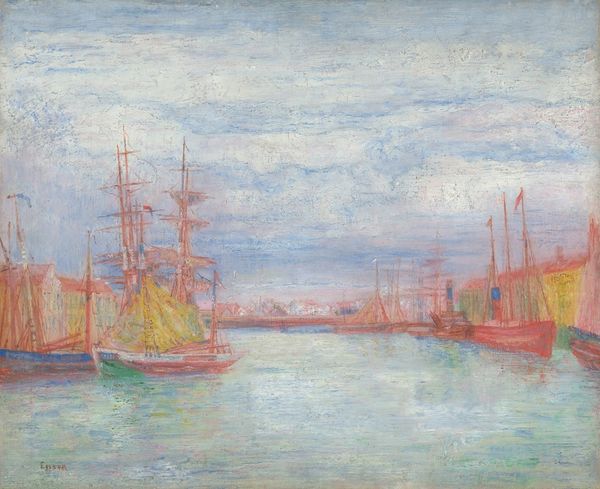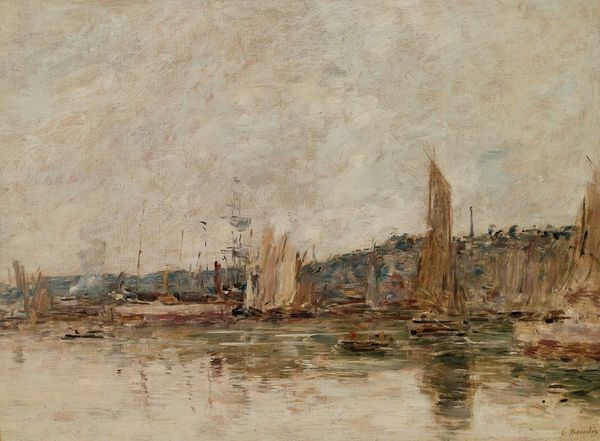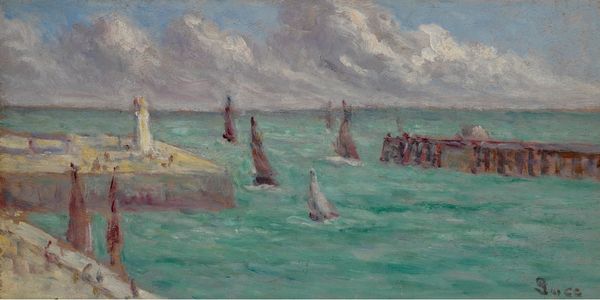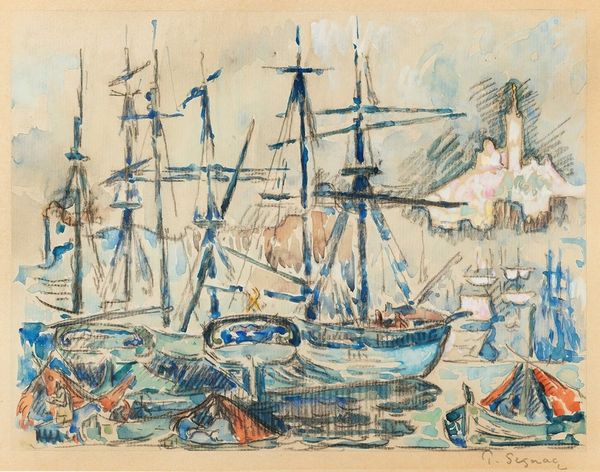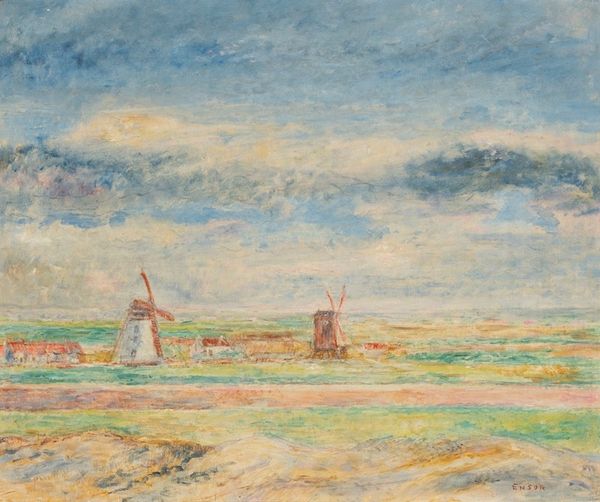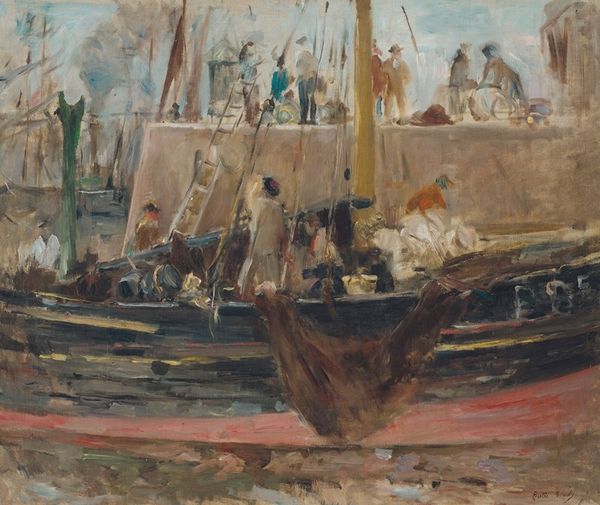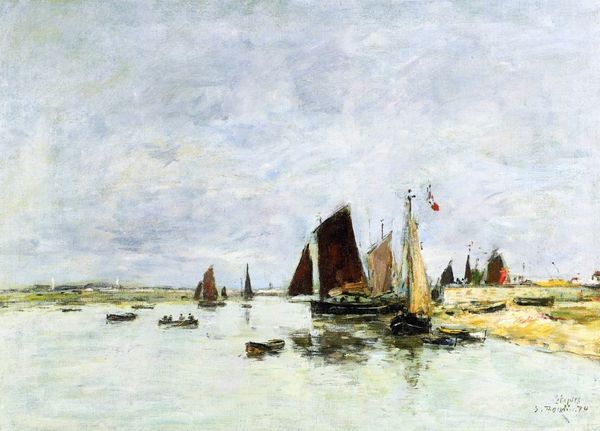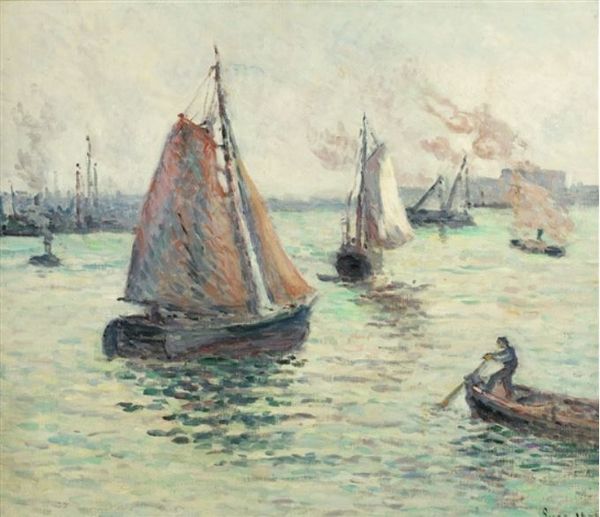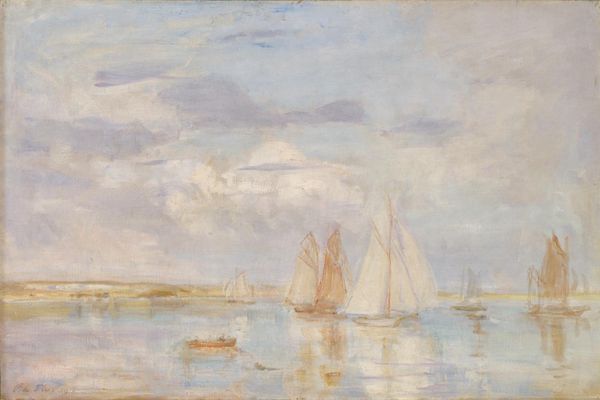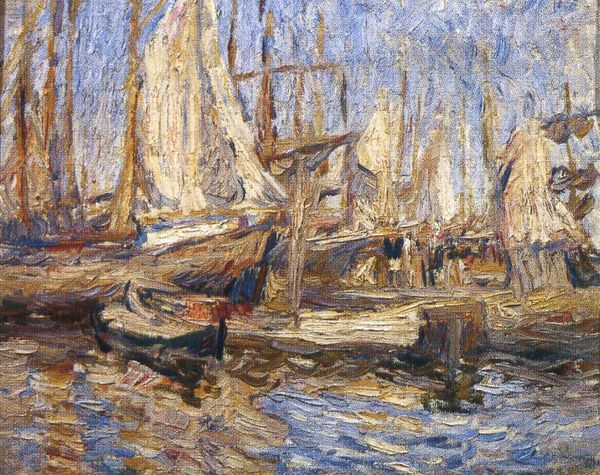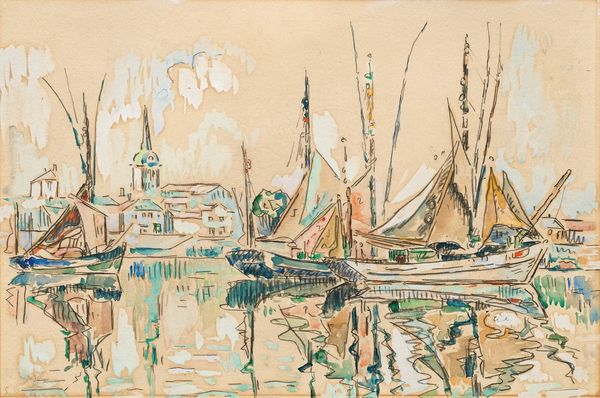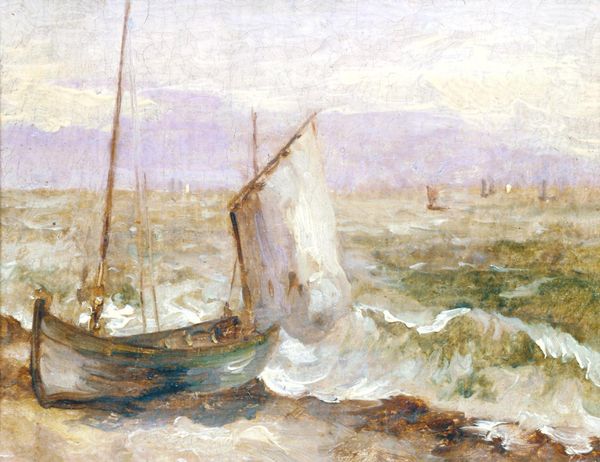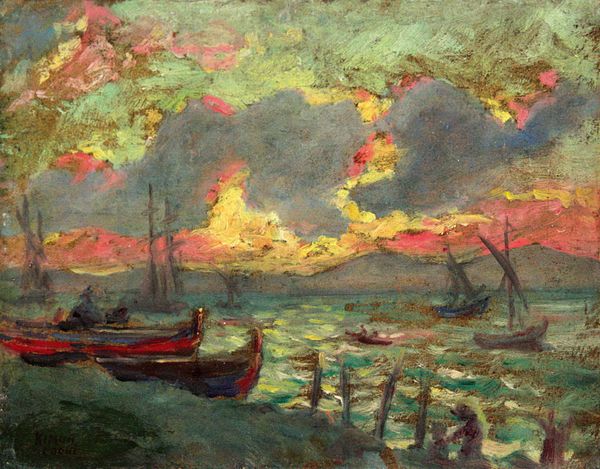
oil-paint, impasto
#
oil-paint
#
landscape
#
oil painting
#
impasto
#
post-impressionism
Copyright: Public Domain: Artvee
Editor: James Ensor's "Sloops," painted in 1890, showcases a series of boats using oil with impasto technique. I'm struck by the reflections and their interplay with the solid forms; it's almost dreamlike. How do you interpret this work? Curator: It's more than just boats in a harbor, isn't it? Ensor was painting at a time of great social and political upheaval, and harbor scenes can often symbolize transition and societal movement. Do you see any indication of how class structures or Belgian national identity might play a part here? Editor: I hadn't considered that. The boats could represent different classes, maybe? The larger ones look more prosperous, the smaller ones… working class? But that could be projecting. Curator: Exactly! And consider the thick impasto. It wasn't just about technique; it was a deliberate act. Think about the Symbolist movement; they challenged academic painting norms as a form of resistance against rigid social hierarchies. This active brushwork and light were methods used to question established norms. What does the water convey? Is it welcoming, or a barrier? Editor: It feels a bit turbulent, even with the reflections. Maybe a challenge to those social transitions you mentioned? A kind of uncertainty? Curator: Precisely. The unsettled waters, the obscured horizon – they speak to anxieties of the time, and to Belgium’s sociopolitical struggles, don't you agree? Art provides invaluable insights when examined within an historical framework. Editor: That's fascinating. Seeing it that way makes the painting far more powerful. Thanks for the context. Curator: Indeed, it underscores how visual elements often mirror greater socio-political themes. Always dig deeper.
Comments
No comments
Be the first to comment and join the conversation on the ultimate creative platform.
